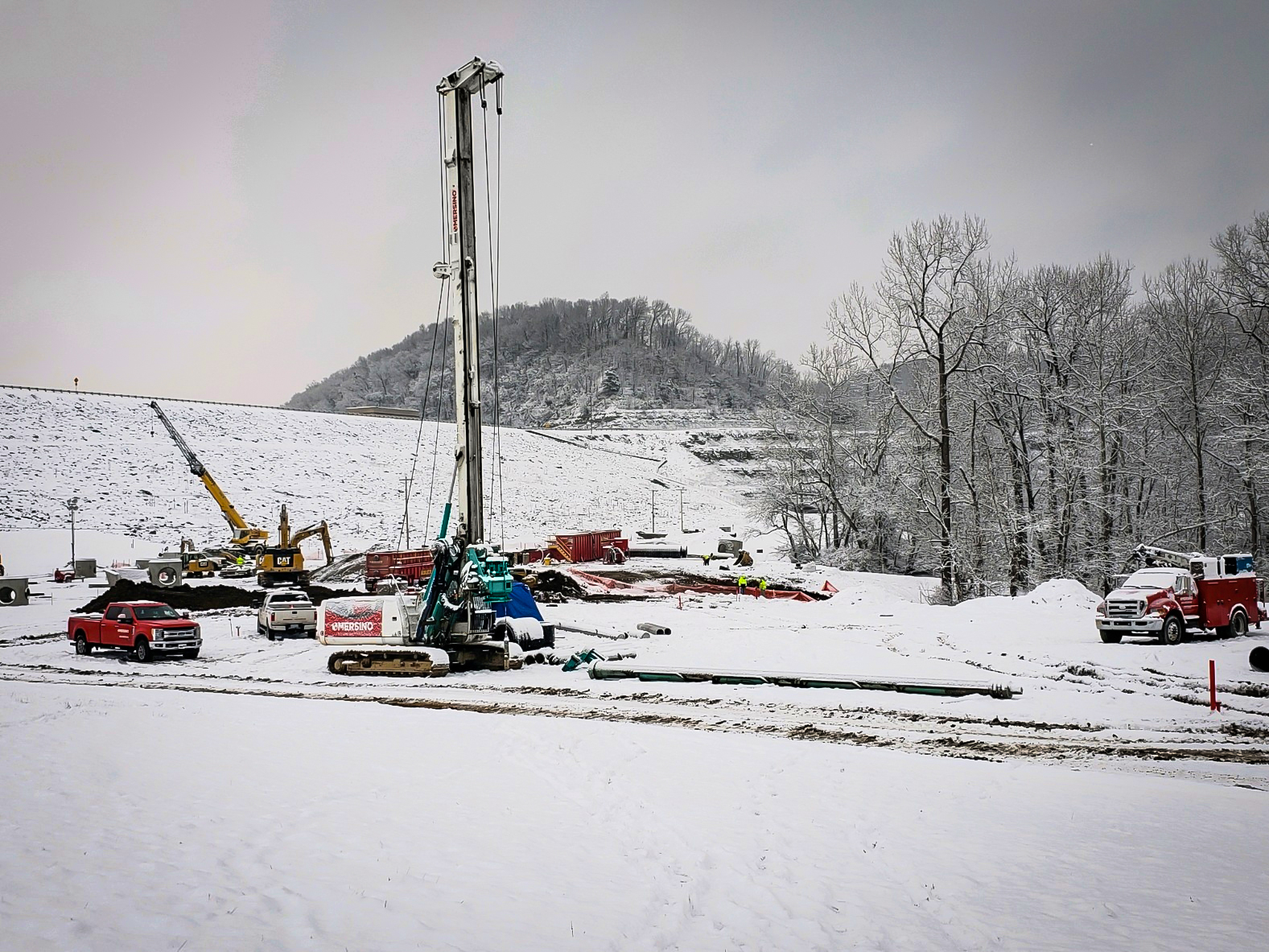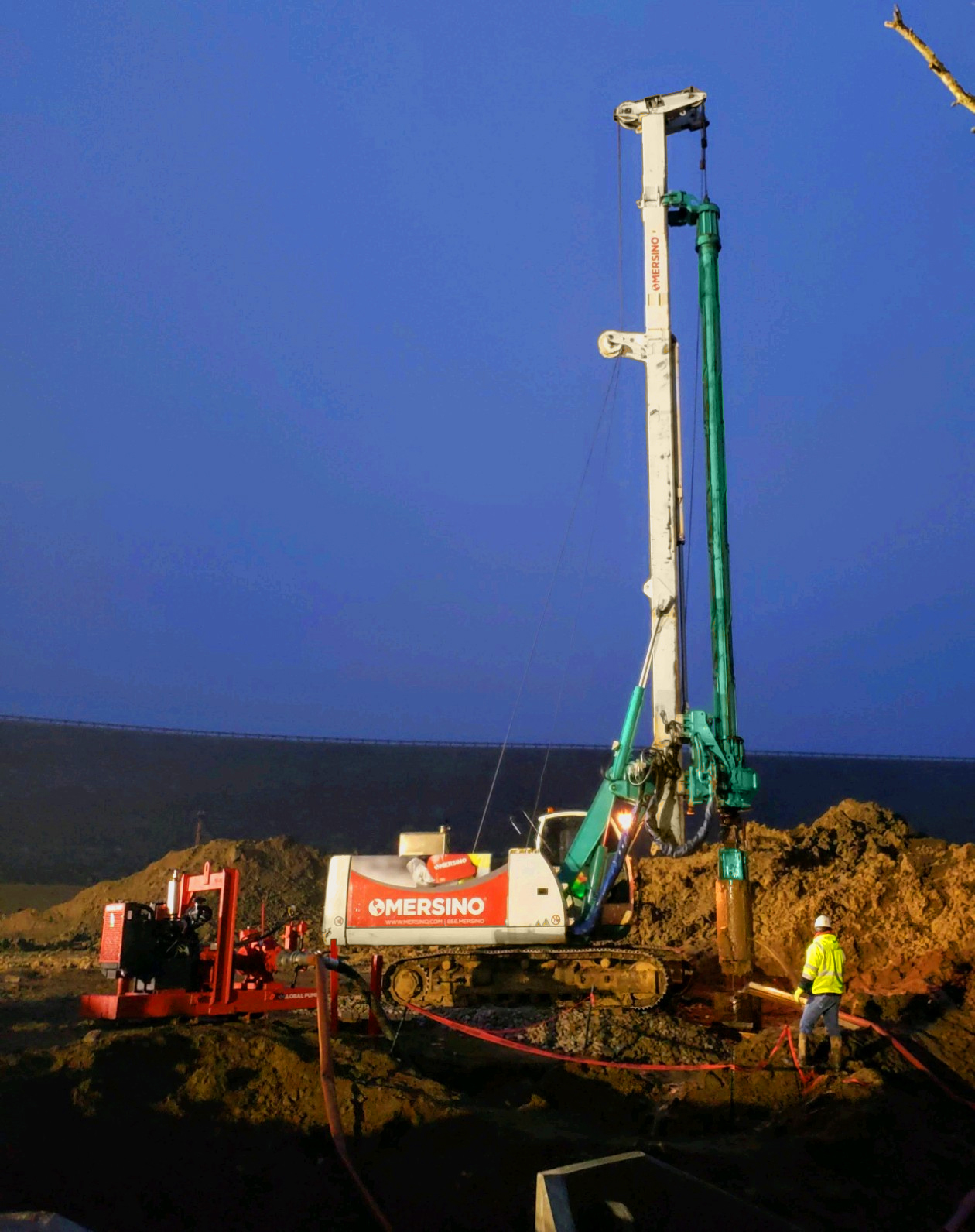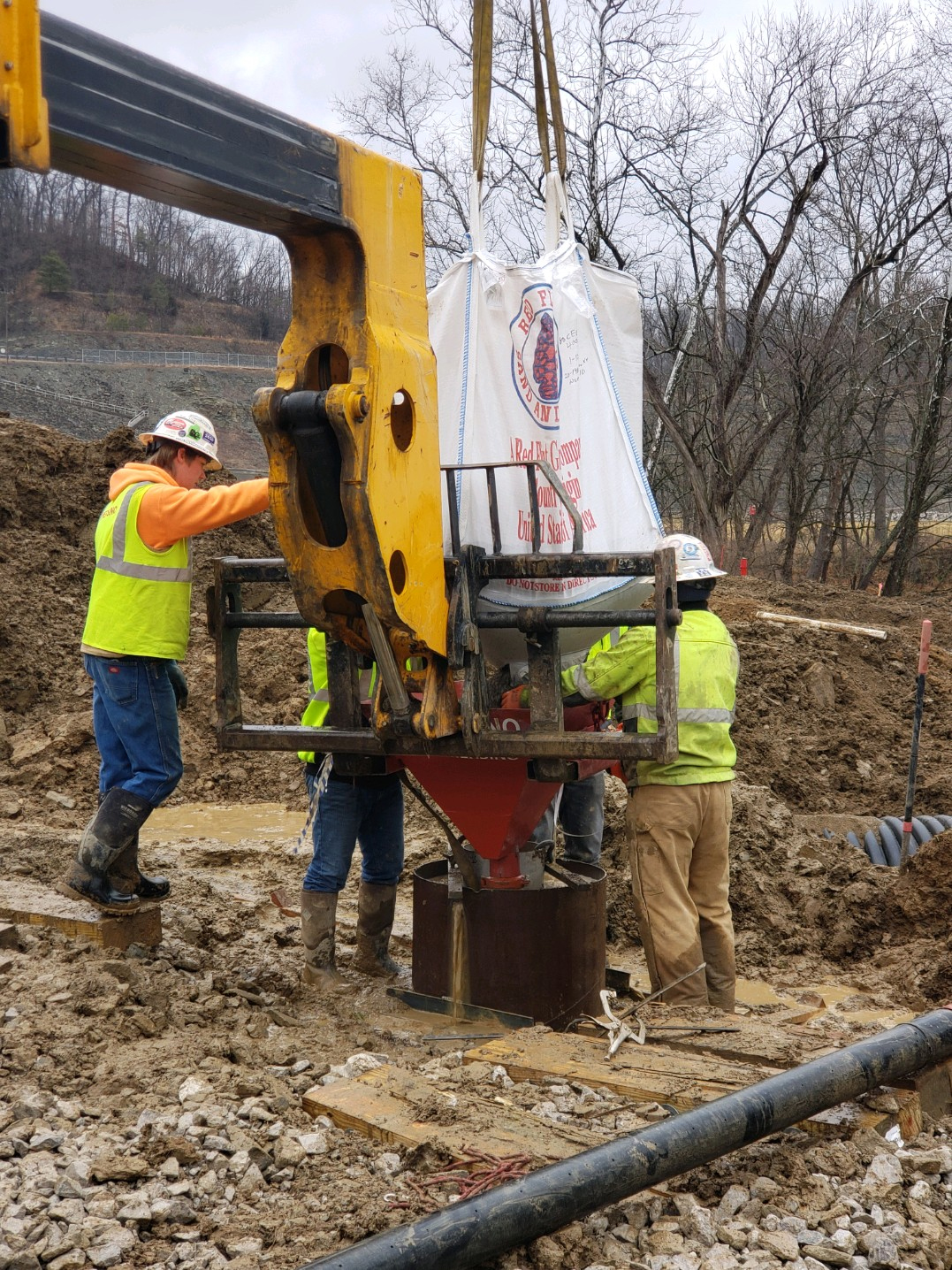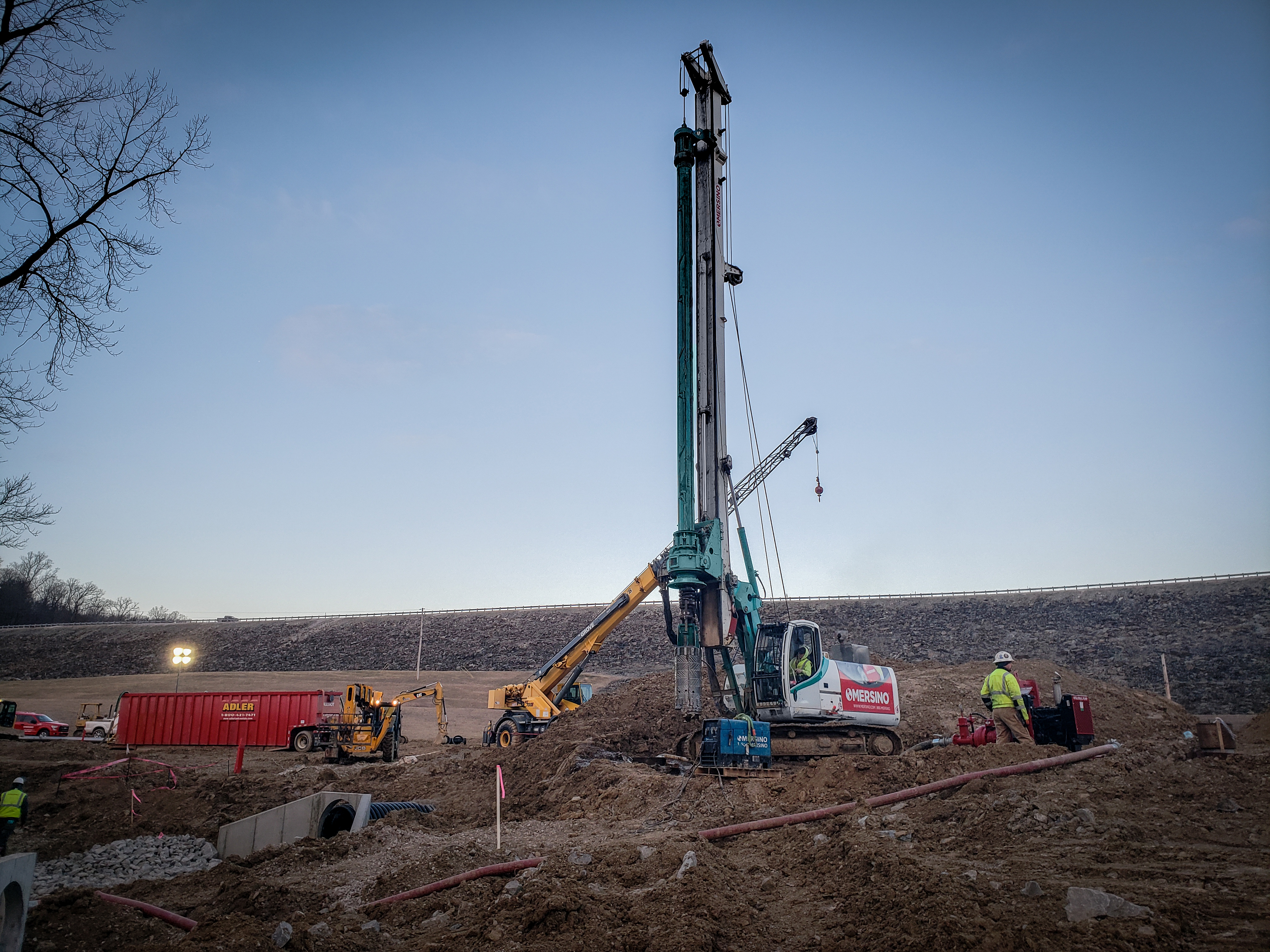Dewatering Gallery
Mohawk Dam Collection Trench & Relief Wells
Warsaw, OH
OVERVIEW:
Mersino furnished and installed a total of ten relief wells as part of the Mohawk Dam Collection Trench and Relief Wells project located in Warsaw, Ohio. The project was engineered and designed by the US Army Corps of Engineers (USACE) to relieve hydrostatic pressure generated during high water levels following significant rain events. Mersino provided all materials, labor and expertise to install ten 12-inch permanent relief wells up to 125’ in depth. Included in the materials were stainless steel wire-wrapped screens, stainless steel well casings, stainless steel check valves, a permanent surface casing to protect the wellhead, and a well filter pack sized and placed according to USACE specifications. After each well installation, Mersino developed the wells by pump surging as well as utilizing a surge block to develop the wells at various intervals over ten hours to assure proper development. After development, Mersino performed a step-drawdown test, specific capacity test, and a Rossum sand test on each well to assure proper installation, filter placement, and development.
METHODOLOGY:
The relief wells were installed up to 125 feet below grade employing a Casagrande B125 track-mounted drill rig equipped with a 24-inch rotary bucket auger. Drilling and installation took place through a 30-inch permanent surface casing to the required depth to help stabilize surface soils, aid in combating any potential hydrostatic pressure, and protect the wellhead after installation. The overall length of each stainless steel wire-wrapped screen and casing necessitated installation of the casing in two pieces. Once the borehole was to the proper depth, Mersino used a 70-ton crane to set each casing half. The halves were then welded together while hanging in the borehole. Multiple stainless steel well centralizers were added during installation to assure proper well alignment. The annulus was then backfilled with a USACE specified well filter pack through a tremie pipe from the bottom of the borehole up to the required elevation in one homogeneous pour. The well was then developed by pump surging and utilizing a surge block at specified intervals for ten hours utilizing the 70-ton crane to lift and lower the surge block at the required elevations within the casing. Upon completion of installation and development, Mersino then performed step-drawdown, specific capacity, and Rossum sand tests on each well. Drawdown and capacity tests were performed using electric submersible pumps, submersible data loggers, ultrasonic flow meters, and electronic water tape as well as manual flow meters and measuring devices. Flows up to 2,000GPM were recorded at varying rates and intervals and were provided to the USACE to substantiate the successful completion of each well. Upon completion of pumping tests, Mersino performed Rossum sand tests to measure the volume of fines being produced from each well. The tests were used to calculate the PPM of fines that were then compared to the specified allowable limit. All the wells were considerably below the allowable limits for fines production and exceeded the requirement for capacity.
«Back






